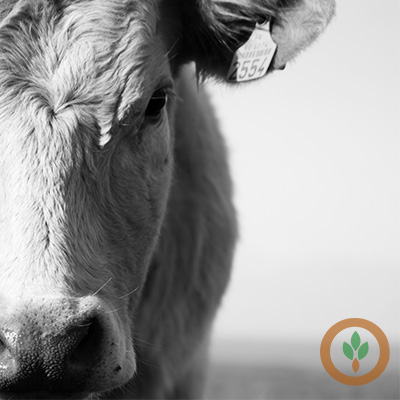Market News
Direct cash business pressures cattle futures

Chicago Mercantile Exchange live cattle futures were lower on technical selling and long liquidation, along with at least some disappointment over the week’s direct cash and Fed Cattle Exchange business. The trade’s also getting ready for the USDA Cattle on Feed report out later this week. April was $1.87 lower at $117.70 and June was down $1.62 at $107.37.
Feeder cattle were sharply lower on the same factors as live cattle. March was down $1.00 at $136.77 and April was $1.22 lower at $136.22.
Direct cash cattle business was light to moderate in the North. Live sales were reported at $126, with dressed trade mostly at $203, both generally steady with Tuesday and down $2 on the week. Clean-up trade was reported in the South, mostly at $126. This week’s early activity was likely motivated by the drop in futures. The rest of the week’s business will probably be limited to clean-up. 166 head were on offer this week at the Fed Cattle Exchange and all 166 sold. The weighted average was $125.63, down $1.37 from last week. Most of the sales were heifers, all were from Kansas, and all are scheduled for 1 to 9-day delivery. The USDA’s Cattle on Feed numbers are out Friday.
Boxed beef closed mixed on light to moderate demand and offerings. Choice was $1.03 higher at $224.38 and Select was $.35 lower at $216.39. The estimated cattle slaughter of 118,000 head was up 1,000 on both the week and the year.
At the Huss Platte Valley feeder cattle sale in Nebraska, compared to the previous week, steers and heifers were sharply lower. The USDA says demand was mostly light, with interest limited by the drop at the CME. 57% of the run were steers and almost 86% of the weekly offering weighed more than 600 pounds. Medium and Large 1 feeder steers weighing 700 to 800 pounds sold at $134 to $151.25 and 800 to 900-pound steers were reported at $130 to $138.75. Medium and Large 1 feeder heifers weighing 700 to 800 pounds ranged from $127 to $133.35 and 110 head averaging 910 pounds brought $120 to $121.25.
Lean hog futures were mixed, mostly modestly higher on spread trade, oversold signals, and the higher midday pork. The session was up and down, with occasional pressure from the steady to lower cash. April was down $.67 at $62.57 and June was up $.47 at $77.22.
Cash hogs were steady to modestly lower, with moderate closing negotiated numbers for the major direct markets. Processing margins have gotten a little better thanks to the relative stability of the cutout value this week, but buyers remain wary of pork demand, with a lot of available product on the market. The USDA’s livestock slaughter and cold storage numbers for February are out Thursday at 3 Eastern/2 Central. The average Iowa/Southern Minnesota hog weight for the week ending March 17th was 285.0 pounds, down 1.2 on the week, but up 3.4 on the year.
Pork closed $.62 lower at $71.45. Hams were up $.69, while the other primal cuts were weak to sharply lower, including a $3.33 loss in ribs. The estimated hog slaughter of 452,000 head was down 11,000 on the week, but up 7,000 on the year.
Iowa/Southern Minnesota direct barrows and gilts closed $.37 lower at $51 to $56 for a weighted average of $55.13, the Western Cornbelt was down $.36 at $51 to $56 with an average of $55.05, and national direct business was $.51 lower at $51 to $56 for an average of $55.04. Butcher hogs at the Midwest cash markets were mostly steady at $36 to $40. It its biweekly test, Red Oak, Iowa was called lower at $38.50. Missouri direct butchers were steady at $50 to $51 on light to moderate supply and demand. Sows were steady at $38 to $44. Illinois direct sows were steady at $30 to $45 on light to moderate demand for heavy offerings. Barrows and gilts were steady at $35 to $40 on light to moderate demand for moderate offerings. Boars ranged from $9 to $22.

Add Comment